- Home
- T. J. English
Paddy Whacked
Paddy Whacked Read online
Paddy Whacked
The Untold Story of the Irish American Gangster
Featuring
Whitey Bulger, Jack "Legs" Diamond, Dean, O'Banion, George "Bugs" Moran, Oeney Madden, Vincent "Mad Dog" Coll, Mike McDonald, Jimmy Walker, John Morrissey, Buddy McLean, Danny Greene, Mickey Featherstone, Tom Pendergast, Edward "Spike" O'Donnell, Jimmy Coonan, Mickey Spillane
T.J. English
FOR Kate And Patrick
with a knick knack paddy whack give a dog a bone, this old man came colling home…
—Early 20th century children's rhyme
i guess we thought we had to be crazier than everybody else 'cause we were the irish gugs.
—MICKEY FEATHERSTONE, Westies hitman
may god have mercy on my soul.
—Last words of DANNY DRISCOLL, co-leader of the Whyo Gang, before his execution on January 23, 1888
contents
EPIGRAPH
INTRODUCTION
Part 1: Birth of the Underworld
1. BLOOD AT THE ROOT
Old Smoke Riseth • The First Irish Mob Boss • Gangs, Gangsters, and the Women Who Love Them • “Hurrah for Big Tim!”
2. A PERFECT HELL ON EARTH
Shamrocks, Shillelaghs, and Yellow Fever • Gambling Men, Wharf Rats, and Ladies of Ill Repute • The Policeman as “Gangster” • “Who Killa de Chief?”
3. UP FROM MUD CITY
See Mike • The Man Behind the Man • Dawn of the Irish Political Boss • The First Ward Ball • Chicago Gambling Wars
4. DELIRIUM TREMENS OR NEW CLOTHES ON AN OLD DAME
King of the Rum Runners • Owney the Killer • When New York Was Really Irish • Diamond in the Rough
5. THE DAGOS VS. THE MICKS
The Merry Prankster • Kingdom of the Gangs • Big Al’s Better Half • Who Killed McSwiggin and Why? • Gunning for Bugs
6. REQUIEM FOR A MAD DOG
“Come and Get Me, Coppers!” • Happy Days and Lonely Nights • With Friends like These… • Playing at a Theater Near You
7. THE SMOKE-FILLED ROOM AND OTHER TALES OF POLITICAL MALFEASANCE
Revenge of the Goo Goos • Kansas City Stomp • Fall of the House of Pendergast • Reform
Part 2: A Long Way From Tipperary
8. HARD HATS & HARD MEN
King of the Dock Wallopers • You Push, We Shove • Cockeye and Squint Get the Chair • The Waterfront Commission • Corridan’s Legacy
9. THE PATRIARCH
Portrait of the Artist as a Young Whiskey Baron • The Friends of Joe Kennedy • All the Way with J.F.K. • The Kennedy Double Cross • Death to Giovanni
10. IRISH VS. IRISH
Running with the Mullin Gang • Boston Gang Wars, Part I • Boston Gang Wars, Part II • Whitey Makes His Move
11. I LEFT MY HEART IN HELL’S KITCHEN
Death and Taxes • Back from Vietnam • Mad Dog Redux • The Wild, Wild Westies • Last of the Gentleman Gangsters
12. LAST CALL AT THE CELTIC CLUB
The Legend of Danny Greene • Live by the Bomb, Die by the Bomb • The Informer
13. MICKEY’S MONKEY
Sissy and Edna • In the Realm of the Westies • The Return of Jimmy C. • Settling Old Scores
14. SOUTHIE SERENADE: WHITEY ON THE RUN
Shadow of the Shamrock • The Bulger Mystique • The Last Hurrah • Old Bones and Shallow Graves
EPILOGUE
SOURCES
ACKNOWLEDGMENTS
SEARCHABLE TERMS
ABOUT THE AUTHOR
PRAISE
COPYRIGHT
ABOUT THE PUBLISHER
introduction
Who would have guessed that in the early years of the twenty-first century—in an era of rampant jihadism and global paranoia—the highest ranking organized crime figure on the Federal Bureau of Investigation’s (FBI) Ten Most Wanted List was neither a Mafia don nor a Latin American narcotraficante nor a Russian mafiya, but rather an old-style Irish American mob boss from around the way?
During the years of his reign, James “Whitey” Bulger, formerly the kingpin of South Boston, was like a character out of an old Cagney movie—tough but sentimental, kind to his mother, politically connected, and a ruthless sociopath who murdered at least nineteen people. Bulger created a criminal organization based in “Southie” that ruled the roost for over twenty years, from the early 1970s until 1995, when Bulger was tipped off that the Feds were coming to get him and went on the lam. The Age of Bulger transpired during a time when most U.S. citizens probably thought the Irish American gangster no longer existed outside of black-and-white Warner Bros. movies from the 1930s. Bulger not only existed, but he also thrived, making millions of dollars annually through racketeering, killing people at will, and getting away with it through expert manipulation of “the System.” He eluded capture and prosecution in a manner that would have made a Mafia boss like John Gotti weep with envy.
As an Irish American gangster, Bulger flew mostly below the national radar. Certainly in the later decades of what was an unprecedented 150-year run for the Irish Mob, old-style mobsters like Whitey were content to operate in the shadows. Let the mafiosi walk the red carpet, their exploits made larger-than-life by the likes of Brando, DeNiro, and Pacino. Let the Italians come under the scrutiny of the FBI, which during Director J. Edgar Hoover’s administration had denied the existence of the Mafia, but would eventually go after “La Cosa Nostra” with the zeal of a jilted lover. Each headline-grabbing arrest and prosecution of “LCN” made it possible for the FBI and other law enforcement agencies to promote their own exploits, creating a self-fulfilling mythology that was great for the G-Men but not so great for the Italians. With the Mafia dominating the headlines, the Irish Mob soldiered on mostly by staying local, keeping their operations small, and working within underworld parameters that had been in place for more than a century.
Whitey Bulger may have been the last of the last, a man whose staying power was unique to South Boston, but the circumstances of his rise in the underworld were the result of a long and violent history. Like most Irish American mobsters, his power was based in part on two major elements: He had a corrupt FBI agent in his pocket and a younger brother in the State House, Massachusetts State Senator William Bulger. The degree to which Whitey was able to finagle these two factors—the lawman and the politician—was part and parcel of his inheritance as an Irish American gangster.
Like a neighborhood godfather from long ago, Bulger doled out turkeys to the needy on Thanksgiving and Christmas, lent money to school kids, did favors for his “constituents,” and settled local disputes. He understood the aggrieved nature of the Irish in Boston, whose legacy was fundamentally the same as that of the Irish in New York, Chicago, Philadelphia, early New Orleans, and myriads of other U.S. municipalities large and small. The ravages of colonialism, famine, pestilence, anti-Irish and anti-Catholic bigotry had shaped the Irish American identity and created a people who were sometimes criticized for being clannish or overly parochial. The Irish themselves didn’t see it that way. Arriving in America en masse under the most dire circumstances imaginable, they did what they had to do: They looked out for one another and created social systems that allowed them to advance, even though American society at large was determined to keep them in their place.
It is a common misconception among most people—even many Irish Americans—that the American Mob began as an Italian institution transplanted directly from Sicily. Indeed, criminal traditions in Sicily, known variously as vendetta societies or la Mafia, were transported to the United States with the beginnings of Italian immigration in the late 1880s and 1890s. But the Irish had been in the United States for over forty years by then, and the American underworld—which was based on c
riminal infiltration of the System for social advancement and economic gain—was already firmly entrenched. The earliest progenitors and organizers of this underworld were Irish refugees whose desire to make it in the New World was informed by oppression, starvation, and the threat of total extermination.
To understand the roots of organized crime in the United States, it is necessary to make a leap of the imagination back to the Old Country. In the early nineteenth century, Ireland was a dreary place, a colony of the British Crown where the Irish people lived as virtual slaves on land that had once belonged to their ancestors. They tilled the soil at the behest of their British landlords who controlled the property through laws that made it nearly impossible for tenant farmers to achieve even a semblance of social mobility, and they could be evicted at any time. The names of all streets and towns had been changed from their original Gaelic into English, and the native language was banned by law. This oppressive colonial system was enforced at the end of the lash and the hangman’s noose.
After a history of failed rebellions and squelched political uprisings, what remained of an anticolonial movement in Ireland was to be found among the “secret resistance societies,” loosely structured organizations that used a strategy of sabotage and violence to disrupt the colonial government, especially in rural areas of the country. The Whiteboys, the Ribbonmen, and the Molly Maguires were comprised of members of the community who circulated openly, but whose membership in the underground resistance movement was a well-guarded secret. These groups represented the earliest inklings of American gangsterism in that they presented themselves as custodians of their communities and were just as likely to prey on their own people as they were to go after Crown forces.
In 1845, the rural resistance societies and all other forms of social interaction—underground or otherwise—were brought to a halt by a tiny agricultural virus known as Phytophthera Infestans. There had been blights before in the country’s potato crop, which both as a product for export and a food source sustained the nation. Normally, the potato was a hardy tuber that always bounced back. This time, however, the virus struck at the root and spread like wildfire, wiping out the entire crops of 1845, 1846, 1847, and so on. Over a period of nearly a decade, the country’s potato crop was decimated; one-third of the island’s population perished from starvation and disease or were forced to flee into permanent exile.
The Great Potato Famine is a vague and distant memory for most Americans, even though an overwhelming majority of the forty million Americans of Irish descent in the United States can trace their ancestry back to what was the most cataclysmic human event of the nineteenth century. Many of the personality characteristics that were lampooned in U.S. newspapers of the era as “typically Irish” were a result of famine and mass starvation.
The famine wasn’t just a crop failure; it was politically mismanaged genocide. For nearly a century leading up to the disaster, the economy of Ireland had been artificially engineered to produce one product and one product only. Regressive Corn Laws were passed that made it economically impossible for Irish farmers to make a profit off the export of any product other than the potato. When the crop was wiped out, it was a complete and total devastation for Irish culture. Families starved to death in their cottages or begged in the streets and were reduced to subhuman levels of subsistence. An archdeacon who toured the village of Kenmare wrote, “On one road…the deaths are three each day. The people are buried without coffins. I daily witness the most terrible spectacles: women, children, and old men crawling out [of their homes] on all fours, perhaps from beside a corpse, to crave a morsel of any kind.”
Another witness wrote, “The cries of starving hundreds that besiege me from morning until night actually ring in my ears…. I attended myself a poor woman whose infant, dead two days, lay at the foot of the bed, and four others nearly dead in the same bed…. A famished cat got up on the corpse of the poor infant and was about to gnaw it but for my interference. I could tell you such tales of woe without end.”
Bodies were piled like refuse on the side of the road. If it wasn’t starvation that got you, it was famine-related disease. “The swollen limbs, emaciated countenances, and other hideous forms of disease are innumerable,” wrote a medical relief worker. “A dreadful disease is breaking out amongst them. I allude to Dysentery with discharge of blood from the bowels.” Another ailment, sore mouth, appeared as well, “which I think has been produced by the unwholesome food the poor were obliged to use in the early part of the season and which so injured the coat of their stomachs and bowels, that now they are not in a state to bear strong food and the consequence is the living membrane of the intestine is coming away.”
These and other medical reports were delivered to Charles Trevelyan, permanent secretary of the Treasury in London and the man who single-handedly controlled most relief expenditures. The British response to reports of mass starvation in their Irish colony just a few miles across the English Channel has been most charitably characterized as a kind of “criminal negligence,” best personified in the public comments of Charles Trevelyan. “Ireland’s great evil,” he stated, was not famine but “the selfish, perverse, and turbulent character of the people.”
British relief efforts were late and insufficient to stem the tide of disease, death, and exile. And so the Irish masses took to the seas, carrying with them a deep-seated bitterness over the genocidal mismanagement of their British overlords, along with a legacy of shame, desperation, and famine-related dementia.
At sea, the Vale of Tears continued, with thousands of refugees dying on the “coffin ships,” in which disease spread among the multitudes crammed together in steerage. All told, the Great Famine lasted ten years, from 1845 to 1855. In a country of eight million, one million died, and another million and a half were forced into exile hoping to find refuge in places like Liverpool, Australia, Canada, and especially the United States.
The ways in which the Irish were able to establish a foothold in the United States were inexorably linked with the growth and development of the country’s most vibrant cities. What was not eradicated during the famine years was the innate sociability of a people who believed in the power of human interaction. The saloon, the parish hall, and the political clubhouse became the foundation of an immigrant dynasty where the terms of survival and social advancement were negotiated and dispensed according to a person’s willingness to play the game.
In the history books, much has been made of early Irish Americans’ use of Tammany Hall, the vaunted nineteenth and early twentieth century political organization, as a means of consolidating power. The implication is that “Tammany politics” and all that they represented were an Irish creation, a veritable hijacking and perversion of the democratic process. In truth, Tammany Hall existed from the beginning of the American republic. It was founded in Philadelphia in the years immediately following the American Revolution as a social, fraternal, and benevolent organization. Named after Saint Tammany, a mythical Indian chief rooted in American Indian lore, the organization was designed as a means for exerting influence over the political process. Members elected their leader, known as a grand sachem, and sought to influence legislation favorable to their own business interests.
This system was in place for nearly a century by the time of the Great Potato Famine and the huge Irish influx of the 1840s, 1850s, and 1860s. In New York, where Tammany Hall had by then consolidated most of its power, Irish immigrants worked their way into the Tammany structure like salmon swimming upstream to spawn. They became precinct captains, ward bosses, and aldermen, injecting energy and imagination into an elaborate ward system that dispensed favors and provided an edge in exchange for a vote. Tammany put forth candidates, mostly Democrats, under their banner, and the entire Machine was well-represented by the organization’s official symbol—a ferocious Bengal tiger.
The Tiger became the short-hand name for an organization that was to become the model for like-minded political machines located far bey
ond the boundaries of New York. In cities large and small, political machines dominated by first and second generation Irish Americans became a common mode of localized government that lasted well into the next century. In many ways, Irish-style politics became the politics of America, especially within the ranks of the Democratic Party, whose benevolent stance toward immigration, the working man, and ethnic politics in general can be traced to the first great influx of Irish immigration.
Organized crime was, in many ways, a natural outgrowth of the Tammany structure. Director Martin Scorcese’s movie Gangs of New York (2002), based on a venerable 1927 book by Herbert Asbury, is somewhat misleading when it determines that the beginnings of organized crime occurred within the universe of the early Irish gangs. In fact, the gangs operated at the behest of the political apparatus. They were the muscle that lurked behind the symbol of the Tammany Tiger, their unique skills most notably required on election day when all political parties—Democratic, Whig, Republican, and Native American—unleashed their bully boys to police the polling sites.
The vast universe of criminal rackets that flowed from the daily workings of the Machine became the basis for organized crime in the United States. Municipal corruption, graft, boodling, illegal gambling and prostitution proceeds, street-level extortion, and gangsterism were a consequence of men and women maneuvering for power, clawing and scratching to gain a foothold within the Machine structure and advance in society.

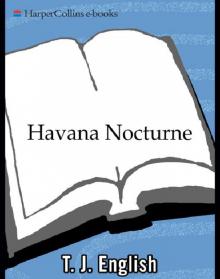 Havana Nocturne
Havana Nocturne Paddy Whacked
Paddy Whacked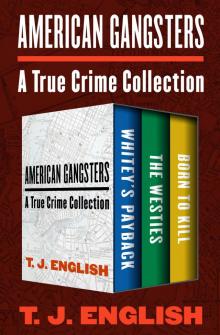 American Gangsters
American Gangsters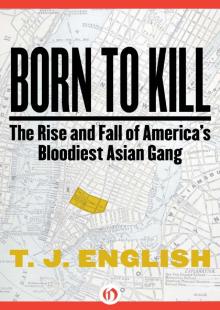 Born to Kill
Born to Kill Westies
Westies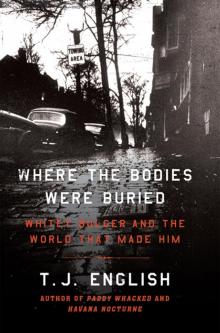 Where the Bodies Were Buried
Where the Bodies Were Buried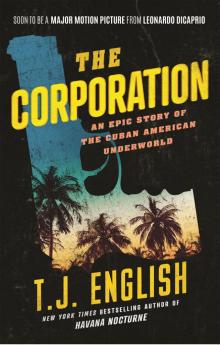 The Corporation
The Corporation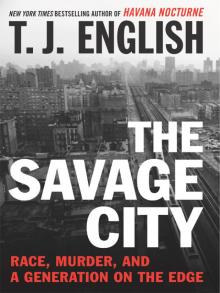 The Savage City
The Savage City